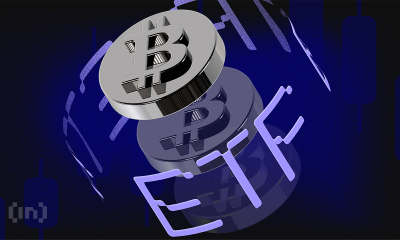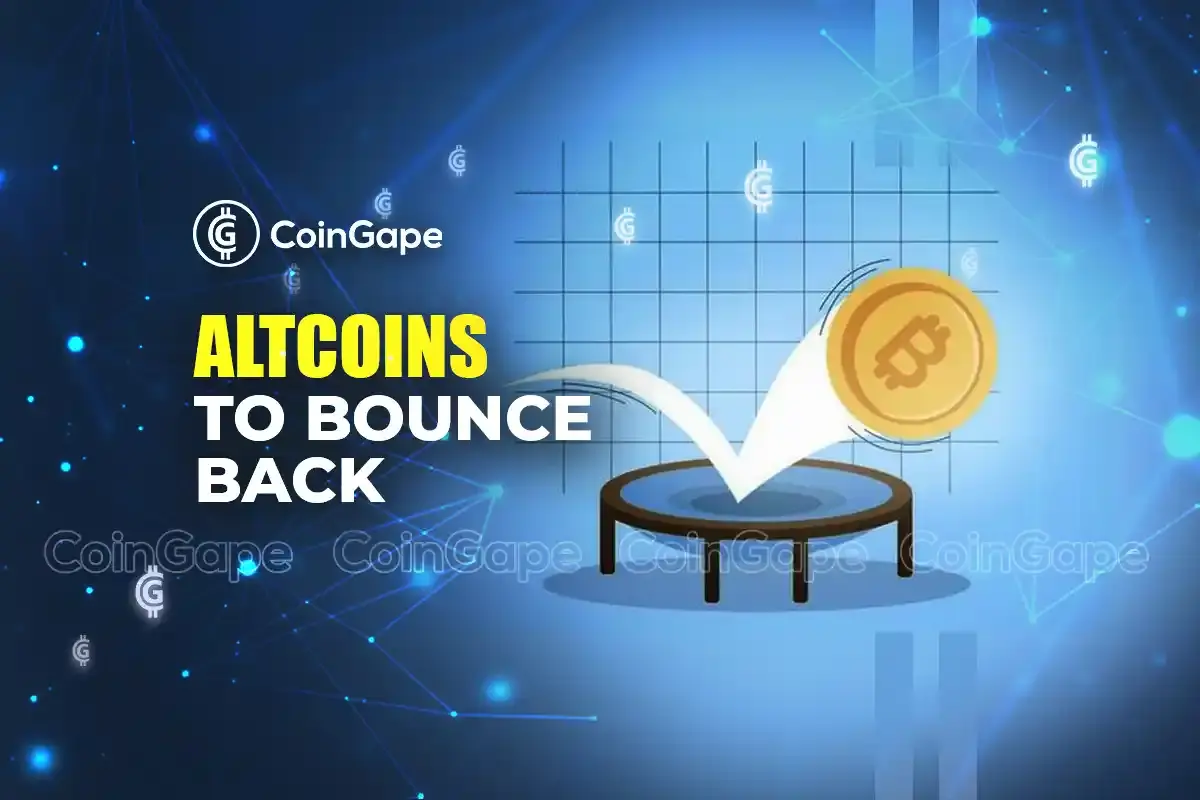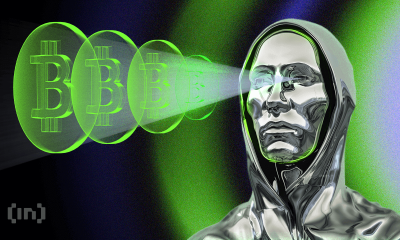Bitcoin
Could Jack Dorsey Be Satoshi Nakamoto? New Clues Suggest So
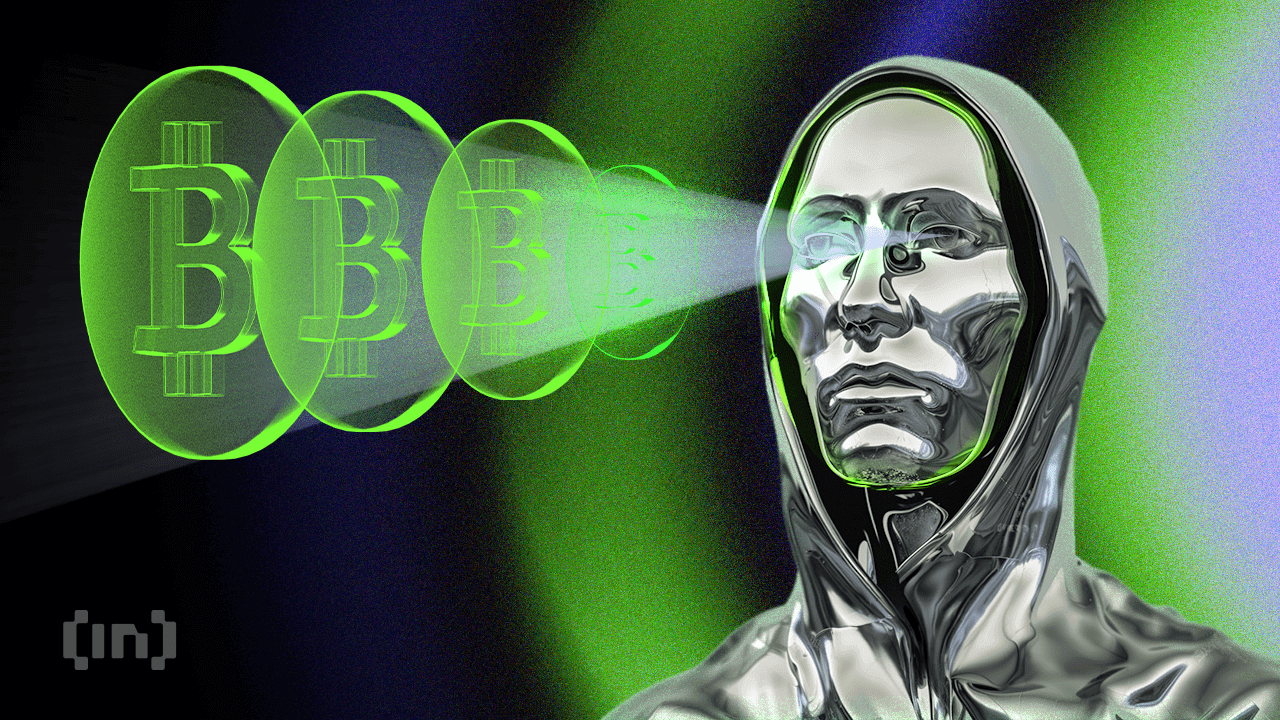
The mystery surrounding the identity of Bitcoin’s elusive creator, Satoshi Nakamoto, has taken another unexpected turn. New speculation links Twitter co-founder and Block CEO Jack Dorsey to the pseudonymous figure.
This theory is fueled by connections between Dorsey’s past activities and key Bitcoin (BTC) milestones.
The Jack Dorsey is Satoshi Nakamoto Theory
The speculation was reignited by a detailed post from popular X user Sean Murray. Murray outlined numerous coincidences and evidence linking Dorsey to Bitcoin’s early days.
“Wrote a manifesto about making a mark without leaving a trace in 2001…Jack parades himself around in a Satoshi shirt…Posted in 2003 that he is ending his dependence on the US dollar and creating a barter network,” Murray noted.
According to Murray, Dorsey was an active member of the cypherpunk community as early as 1996. He was also a known cryptography enthusiast and a skilled programmer in multiple languages. The post highlights Dorsey’s early participation in cryptographic mailing lists and forums.
It also cites a history of discussing pseudonyms, digital privacy, and financial decentralization. Further, Bitcoin.org was registered the day after Dorsey tweeted a cryptic message about sailing. According to Murray, this echoes a famous sailor’s adage in the original Bitcoin source code.
Additionally, the earliest Bitcoin documentation timestamps align with Dorsey’s known habit of late-night work. Beyond that, key Bitcoin milestones align with significant dates in Dorsey’s personal life.
Specifically, Murray highlights Satoshi’s forum activity, which coincided with Jack Dorsey’s birthday and those of his family members.
Murray’s consequential evidence includes Dorsey’s deep admiration for Bitcoin and persistent advocacy for its decentralization principles.
Murray’s theory suggests that Bitcoin was Dorsey’s “masterpiece.” He describes it as an art form through which he aimed to transform digital finance while maintaining pseudonymity rather than complete anonymity.
“The belief that Satoshi never wanted to be found is something that other people invented about Satoshi. Satoshi chose pseudonymity, not anonymity, as Jack so pointed out in a podcast with Lex Fridman. The reason why Jack would do all of the above, while not directly admitting it, is because Satoshi and Bitcoin are his art. And it’s a masterpiece,” Murray added.
Given the extensive circumstantial evidence, the theory connecting Jack Dorsey to Satoshi Nakamoto remains speculative but compelling.
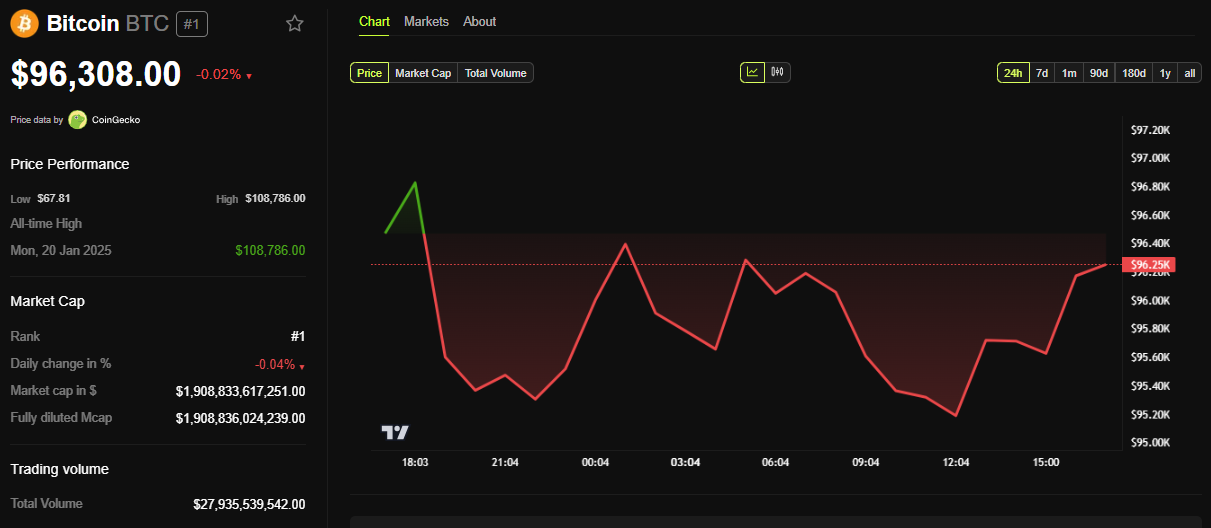
Bitcoin price remains unmoved by this speculation. As of this writing, BTC was trading for $96,308, down by 0.02% since Tuesday’s session opened.
Ongoing Speculation Around Satoshi Nakamoto’s Identity
The question of who created Bitcoin has been a long-standing debate, with numerous individuals speculated to be Satoshi Nakamoto. Recently, an HBO documentary claimed to have unmasked Bitcoin’s creator five months ago, sparking further interest.
However, the documentary turned out to be speculative at best, naming Peter Todd and leaving the question of “who is Satoshi Nakamoto” unanswered.
“I’m not Satoshi,” Todd said on X (Twitter).
Similarly, a recent Satoshi Nakamoto “reveal” conference in London also fell apart bizarrely. As BeInCrypto reported, this further fueled skepticism around those claiming to be Bitcoin’s creator. Beyond Todd and now Dorsey, several other figures have previously been linked to Satoshi.
Among them was Len Sassaman, a cryptographer who passed away in 2011. Due to his work on anonymity-focused projects, he was thought to have been a prime suspect. However, his widow, Meredith L. Patterson, denied the speculation.
“Meredith L Patterson, Len Sassaman’s widow, denied the speculation that Len Sassaman was Satoshi Nakamoto in an interview. HBO never contacted her when making the documentary,” WuBlockchain reported.
Another theory involved Nick Szabo, a well-known cryptographer and creator of “Bit Gold,” a precursor to Bitcoin. As BeInCrypto reported, 10X Research pointed to Szabo, adding an intriguing layer to the mystery surrounding the true identity of the elusive Bitcoin creator.
Similarly, Craig Wright, an Australian entrepreneur, has claimed to be Satoshi Nakamoto but has repeatedly failed to provide conclusive proof. Recently, he lost another legal battle regarding his claim.
Backlash Against the Speculation
While some Bitcoin enthusiasts are eager to uncover Satoshi’s identity, others argue that such speculation is harmful.
“Accusing someone of being Satoshi without providing bulletproof evidence makes you [a bad person] because you’re painting a target on them,” Security expert Jameson Lopp criticized.
Similarly, Rusty Russell, an open-source developer, warned against such speculation, citing a violation of privacy.
“Speculating on Satoshi’s identity is not just a way to increase someone’s risk of violent theft attempts: it also pointlessly disrespects his clear desire for privacy,” Russell added.
These concerns have precedent. The recent HBO documentary’s allegations about Bitcoin’s founder forced cryptographer Peter Todd into hiding, illustrating the potential dangers of such exposure.
As the debate continues, new theories emerge. Coinbase director Conor Grogan suggested that Kraken, a major cryptocurrency exchange, may hold crucial clues to Satoshi’s identity.
Additionally, concerns have been raised about the future security of Satoshi’s Bitcoin holdings. Tether’s CEO warned that advancements in quantum computing could compromise Nakamoto’s vast Bitcoin stash.
Whether Dorsey is truly the mastermind behind Bitcoin remains to be seen. However, industry experts like Mathew Sigel, head of digital assets research at VanEck, support the theory that Jack Dorsey is Satoshi Nakamoto.
“In the spirit of full disclosure, intellectual honesty, posterity’s judgment, and rigorous debate, I would like to share my strong belief: I have become personally convinced that Jack Dorsey – CEO of Square and founder of X – is Bitcoin’s founder Satoshi Nakamoto. This is my opinion, not that of VanEck,” Sigel shared on X.
Disclaimer
In adherence to the Trust Project guidelines, BeInCrypto is committed to unbiased, transparent reporting. This news article aims to provide accurate, timely information. However, readers are advised to verify facts independently and consult with a professional before making any decisions based on this content. Please note that our Terms and Conditions, Privacy Policy, and Disclaimers have been updated.
Bitcoin
Swiss Supermarket Chain Welcomes Crypto Payments
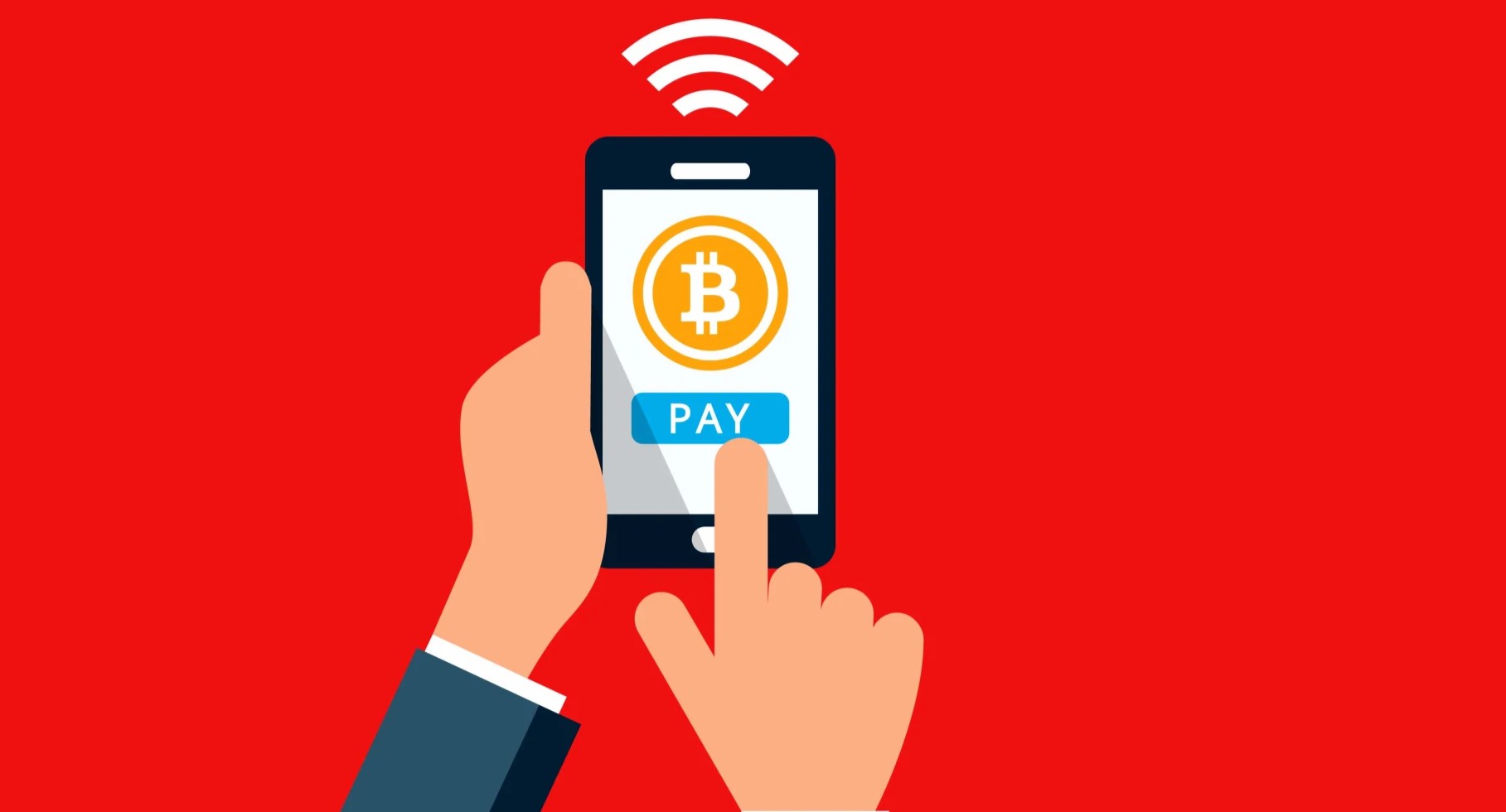

One of Zug, Switzerland’s Spar supermarkets has begun accepting Bitcoin as a form of payment, following an increasing number of enterprises welcoming cryptocurrency for day-to-day purchases. The move is a big development for the global grocery chain with almost 14,000 stores spread around the globe and catering to nearly 15 million customers every day.
Swiss Outlet Breaks Ground With Bitcoin Payment Option
This supermarket outlet in Zug has recently been added to the BTC Map, a community-powered platform that monitors businesses across the globe that accept Bitcoin payments, as reported by DFX.swiss, a Switzerland-based cryptocurrency startup. The system supports payment through Bitcoin Lightning Network technology, and customers can make payments by merely scanning a QR code.
Rahim Taghizadegan, a bitcoin economist who is the leader of the Bitcoin Association Switzerland, was a guest at the shop and verified the system functions correctly. In a video posted on LinkedIn, he explained how clients can pay using the cryptocurrency.
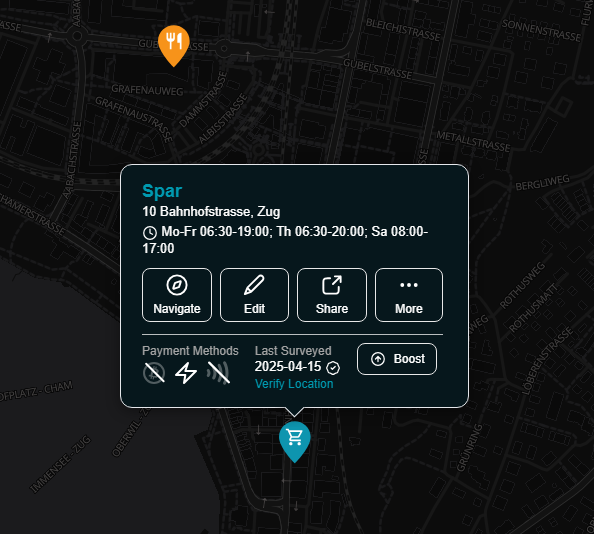
Spar on BTC Map.
Technical Solution Makes Transactions Quick
The payment system operates on the OpenCryptoPay protocol, created by DFX.swiss to support real-life crypto transactions. The system harnesses the peer-to-peer features of the Bitcoin Lightning Network, which accelerates transactions and makes them more feasible for use in retail outlets.
Switzerland has emerged as a hotbed of cryptocurrency acceptance, with more than 1,000 businesses accepting Bitcoin payments. The Swiss city of Lugano went as far as legalizing BTC and USDT as legal tender back in 2022, and lately, added a statue dedicated to the anonymous founder of Bitcoin, Satoshi Nakamoto.
Global Adoption Gaining Momentum
Although the Bitcoin payment option is now only offered at one Spar store, any rollout to the chain’s international network could have a massive impact on cryptocurrency usage in day-to-day shopping. Spar has an international presence in 48 countries, which means it has potential to bring millions of customers into contact with cryptocurrency payment.
Bitcoin at the checkout? It’s happening.
SPAR supermarket in Zug, Switzerland is now accepting Bitcoin via Lightning Network.
✅ Scan QR
✅ Pay in seconds
✅ No card, no cashIf this clicks, 13,900+ SPAR stores in 48 countries could follow.
Retail just got a crypto upgrade.— efiletax (@efile_tax) April 18, 2025
This move continues an increasing pattern of Bitcoin uptake among retail businesses across the globe. Pick n Pay, which operates as one of South Africa’s largest food grocery chains, accepted digital currency as of 2022. Sports car maker Ferrari is also on board with taking cryptocurrency payments, exhibiting adoption through numerous market sectors.
Education Sector Also Embracing Cryptocurrency
According to last week’s reports, the trend is extending beyond retail and high-end merchandise. Lomond School in the United Kingdom revealed that it would accept tuition fees in BTC from autumn 2025, introducing cryptocurrency payments into education.
As institutions and more businesses incorporate cryptocurrency payments, customers could find crypto used as a standard choice to make payments instead of the traditional way. The Spar rollout in Switzerland might be a pilot for other markets within the grocery chain’s wide network.
The move by Spar to bring this payment mechanism to Switzerland reaffirms the welcoming attitude of this nation toward innovations in cryptocurrency. With the endorsement of a reputable global retailer like Spar, Bitcoin continues its transition from being fundamentally an investment currency to a practical currency for everyday shopping.”
Featured image from Inc. Magazine, chart from TradingView

Editorial Process for bitcoinist is centered on delivering thoroughly researched, accurate, and unbiased content. We uphold strict sourcing standards, and each page undergoes diligent review by our team of top technology experts and seasoned editors. This process ensures the integrity, relevance, and value of our content for our readers.
Bitcoin
What Does This Mean for Altcoins?

Bitcoin’s (BTC) market dominance has surged to 64%, reaching its highest level in over four years.
However, experts remain divided on what this means for the future. Some predict an impending altcoin season, and others caution that Bitcoin’s dominance could continue to suppress altcoins.
What Does Bitcoin’s Rising Dominance Mean?
For context, Bitcoin dominance (BTC.D) refers to the percentage of the total cryptocurrency market capitalization that BTC holds. It is a key indicator of Bitcoin’s market strength relative to other cryptocurrencies. A rising dominance suggests that Bitcoin is outperforming altcoins, while a decrease may signal growing interest or investment in other digital assets.
The metric has been steadily increasing since late 2022. As of the latest data, it surged to 64%, marking highs last seen in early 2021.

Notably, Benjamin Cowen, founder of Into The Cryptoverse, highlighted that the number is much higher when excluding stablecoins.
“Excluding stable coins, Bitcoin dominance is now at 69%,” Cowen revealed.
The rise in Bitcoin dominance has sparked debate among analysts about its implications for altcoins. Cowen believes there will be a correction or downward movement in altcoins before any substantial gains can be expected in the market. This implies that the altcoin season may not be imminent yet.
“I think ALT/ BTC pairs need to go down before they can go up,” he stated.
Nordin, founder of Nour Group, also expressed caution. He stressed that Bitcoin dominance is nearing the levels seen during the peak of the 2020 bear market.
“This isn’t just a BTC move. Its capital rotating out of alts,” he noted.
Moreover, Nordin warned that a break above 66% could intensify selling pressure on altcoins. This, in turn, could delay the altcoin season.
“Bitcoin dominance back to 64%. No Alt seasons in 2024 or 2025,” analyst, Alessandro Ottaviani, predicted.
On the other hand, analyst Mister Crypto predicts that Bitcoin’s dominance may follow a long-term descending triangle pattern. A descending triangle typically suggests bearish momentum, where the price or dominance gradually decreases as lower highs are formed.
However, this could prolong its market control before a broader correction allows altcoins to gain traction.
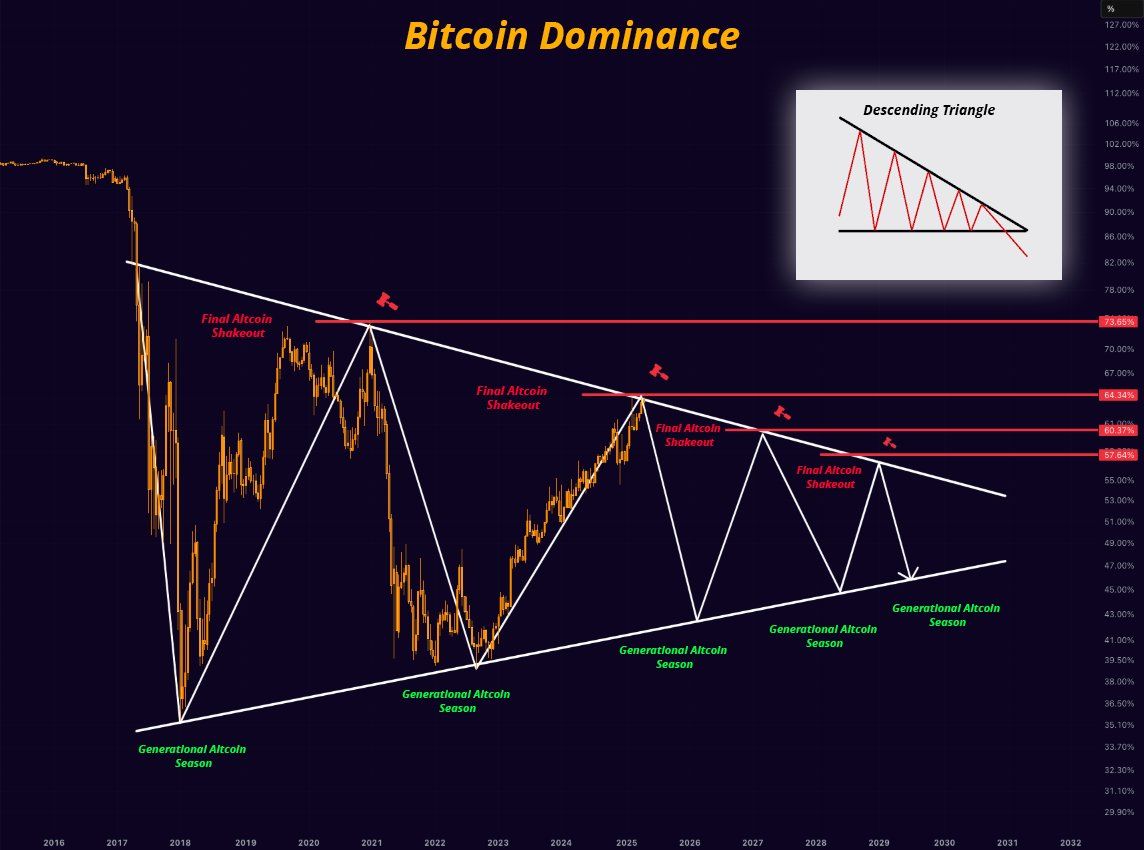
Another analyst mentioned that Bitcoin dominance is currently testing the resistance zone between 64% and 64.3%. Therefore, a possible retracement may be on the horizon. Should this retracement occur, altcoins could begin to gain traction, with some potentially emerging as top performers in the market as capital shifts away from Bitcoin.
“However, a breakout from this zone could mean further declines for alts,” the analyst remarked.
Finally, Junaid Dar, CEO of Bitwardinvest, offered a more optimistic view. According to Dar’s analysis, if Bitcoin’s dominance drops below 63.45%, it could trigger a strong upward movement in altcoins. This, he believes, would create an ideal opportunity to profit from altcoin positions.
“For now, alts are stuck. Just a matter of time,” Dar added.
Tether Dominance Signals Potential Altcoin Season
Meanwhile, many analysts believe that the trends in Tether dominance (USDT.D) signal a potential altcoin season. From a technical analysis standpoint, USDT.D has reached a resistance zone and may be due for a correction, suggesting the possibility of capital flowing from USDT into altcoins.
“The USDTD is in a rejection zone, as long as it does not close above 6.75% it will be favorable for the market,” a technical analyst wrote.
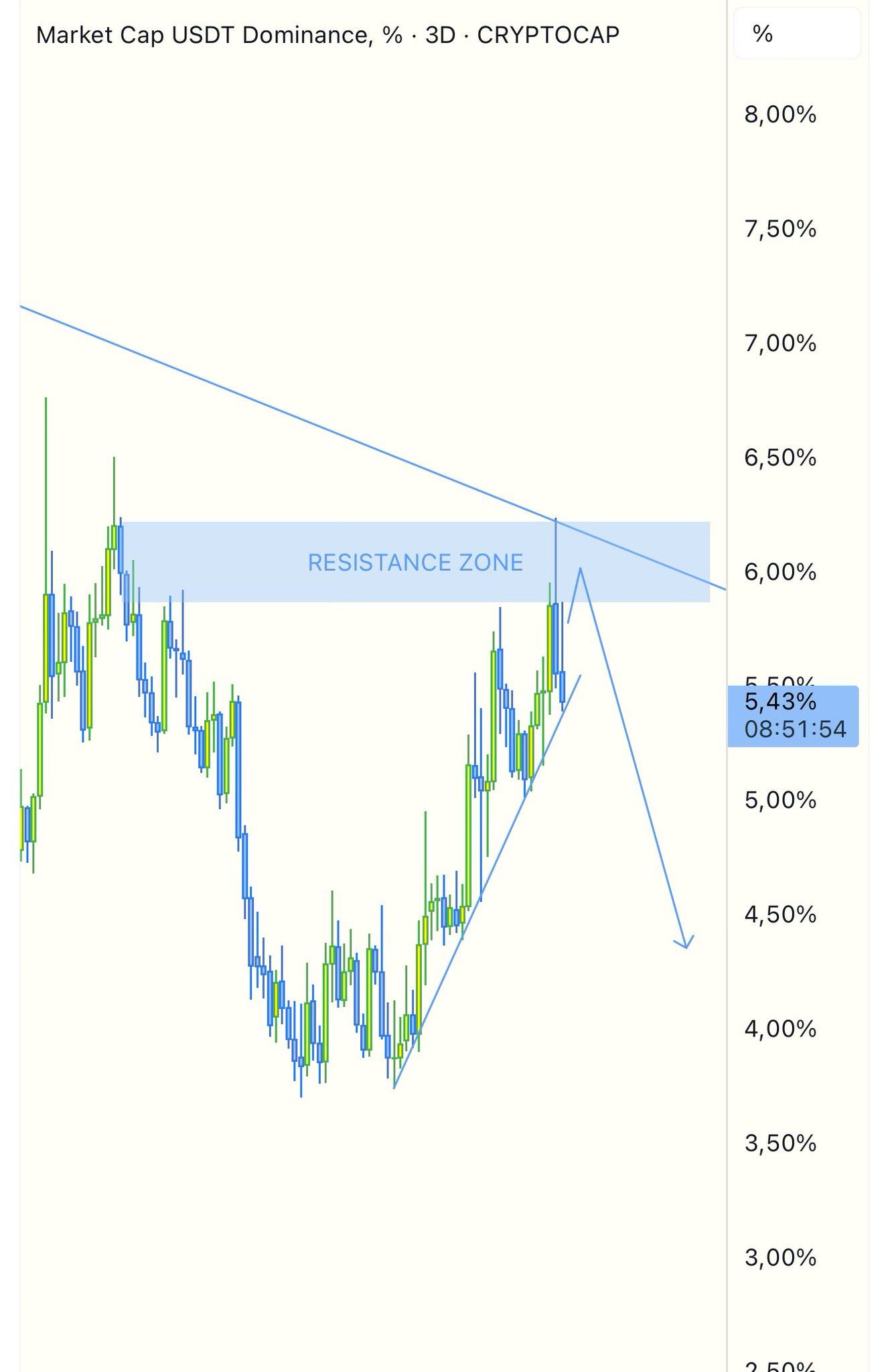
Another analyst also stressed that the USDT.D and USD Coin dominance (USDC.D) have reached resistance, forecasting an incoming altcoin season. Doğu Tekinoğlu drew similar conclusions by observing the combined chart of BTC.D, USDT.D, and USDC.D.
As Bitcoin’s dominance climbs, investors are closely monitoring these technical and on-chain signals. The interplay between Bitcoin’s strength and stablecoin dynamics could dictate whether altcoins stage a comeback this summer or face further consolidation. For now, Bitcoin’s grip on the market remains firm.
Disclaimer
In adherence to the Trust Project guidelines, BeInCrypto is committed to unbiased, transparent reporting. This news article aims to provide accurate, timely information. However, readers are advised to verify facts independently and consult with a professional before making any decisions based on this content. Please note that our Terms and Conditions, Privacy Policy, and Disclaimers have been updated.
Bitcoin
Babylon’s TVL Drops 32% After Massive Bitcoin Unstaking

Babylon, a platform enabling native Bitcoin (BTC) staking, recorded a notable unstaking event on April 17. Approximately $1.26 billion worth of BTC was withdrawn from the protocol.
The move resulted in a significant decline in Babylon’s total value locked (TVL). Moreover, the price of its native token, BABY, also dipped.
Babylon’s TVL Drops 32% After Massive BTC Unstaking
Blockchain analytics firm Lookonchain alerted users about the unstaking on X (formerly Twitter).
“About 5 hours ago, 14,929 BTC($1.26 billion) was unstaked from Babylon,” the post read.
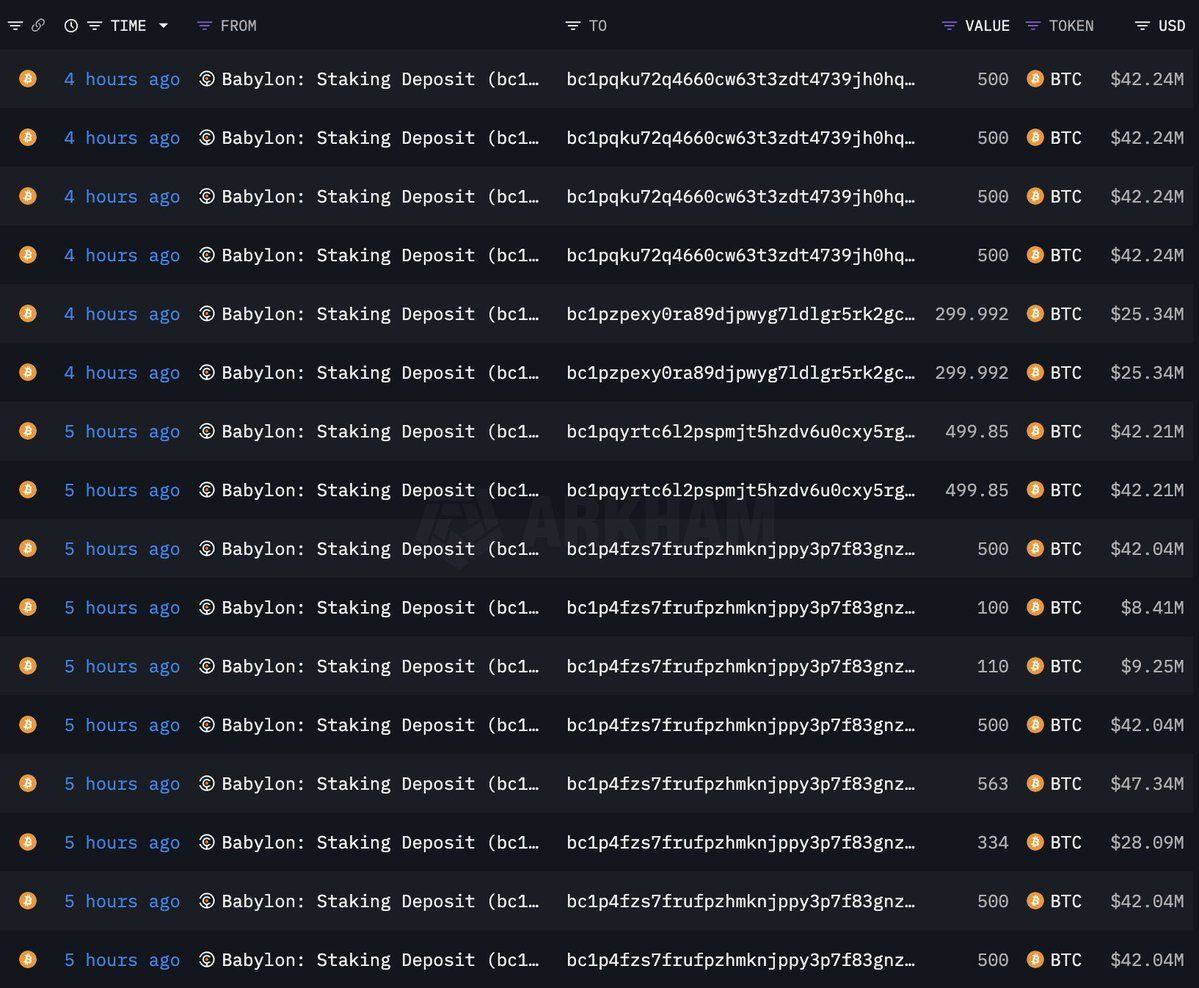
This move triggered a sharp drop in the platform’s TVL. According to data from DefiLama, Babylon’s TVL dropped from $3.9 billion to $2.6 billion in just a day, representing a decline of 32.7%. Moreover, only 31,502 BTC remain staked in the protocol at press time.
That’s not all. The BABY token was also not immune to market pressures. According to BeInCrypto data, the token depreciated by 9.8% over the past day alone. At the time of writing, the altcoin was trading at $0.8.

The unstaking led to widespread speculation about the platform’s stability and the broader implications for Bitcoin-based decentralized finance (DeFi) protocols.
“What’s going on. I don’t waste my time partaking in staking BTC, but this can be concerning. You don’t just see so much unstaking in such a short window,” a user said.
Nonetheless, Lombard Finance quickly moved to calm investor concerns. The Bitcoin restaking protocol, built on Babylon, clarified that the withdrawal was part of a planned transition to a new set of finality providers.
“To carry out the transition to our new set of Finality Providers, the Lombard Protocol has begun the process of unstaking BTC from the Lombard Finality Provider,” Lombard Finance stated.
The post emphasized that this process was a necessary step in the evolution of the platform. In addition, the company reassured investors that the withdrawn funds are expected to be restaked once the unbonding process concludes.
The unstaking event follows closely on the heels of Babylon’s airdrop earlier this month. 600 million BABY tokens—representing 6% of the token’s total supply—were distributed to early adopters, including Phase 1 stakers, Pioneer Pass NFT holders, and contributing developers.
Shortly after the airdrop, $21 million worth of Bitcoin was unstaked within 24 hours. This suggests a pattern of capital withdrawal that has intensified with the latest event.
Disclaimer
In adherence to the Trust Project guidelines, BeInCrypto is committed to unbiased, transparent reporting. This news article aims to provide accurate, timely information. However, readers are advised to verify facts independently and consult with a professional before making any decisions based on this content. Please note that our Terms and Conditions, Privacy Policy, and Disclaimers have been updated.
-

 Market22 hours ago
Market22 hours agoMatchain’s Petrix Barbosa Talks the Future of Digital Identity
-

 Market16 hours ago
Market16 hours agoXRP Consolidation About To Reach A Bottom, Wave 5 Says $5.85 Is Coming
-

 Market23 hours ago
Market23 hours agoBase Launches Strong, But Content Coins Draw Doubt
-

 Altcoin20 hours ago
Altcoin20 hours agoLorenzo Protocol (BANK) Price Rallies 150% After This Binance Announcement
-
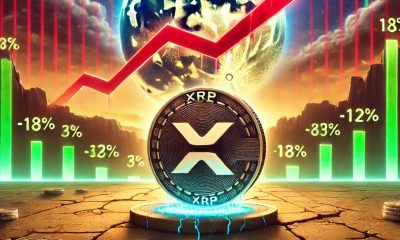
 Market19 hours ago
Market19 hours agoDespite an 18% Drop, XRP’s Exchange Supply Hits Lows—Bullish Setup Ahead?
-

 Altcoin9 hours ago
Altcoin9 hours agoAnalyst Reveals Dogecoin Price Can Reach New ATH In 55 Days If This Happens
-
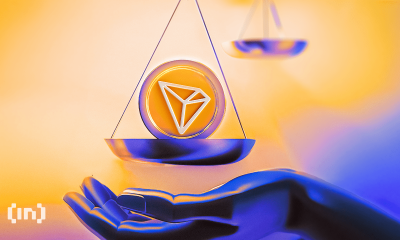
 Market15 hours ago
Market15 hours agoCanary Capital Aims to Launch TRON-Focused ETF
-

 Market13 hours ago
Market13 hours agoCardano (ADA) Moves Sideways, But Bullish Shift May Be Brewing






